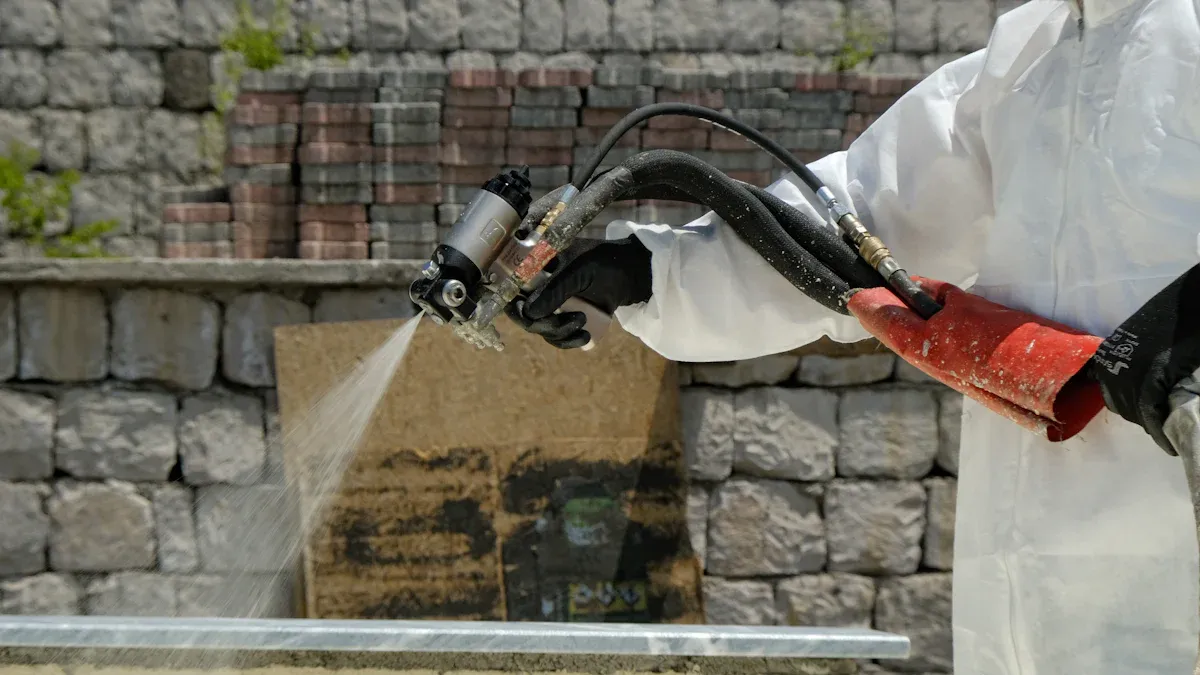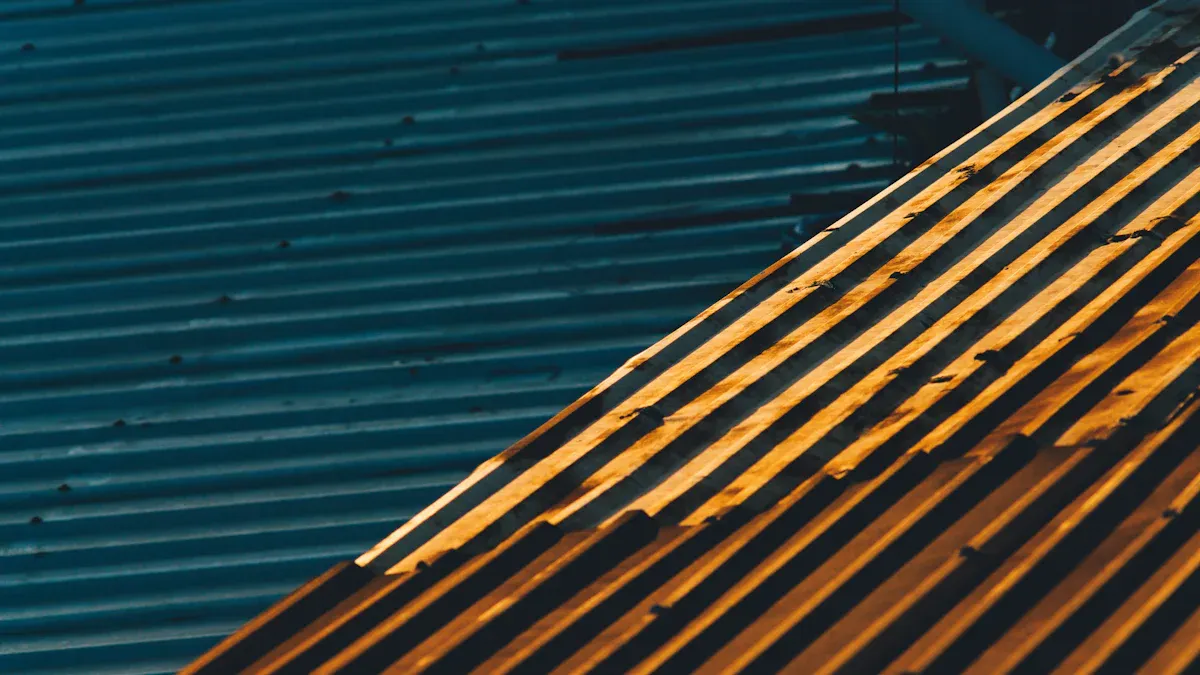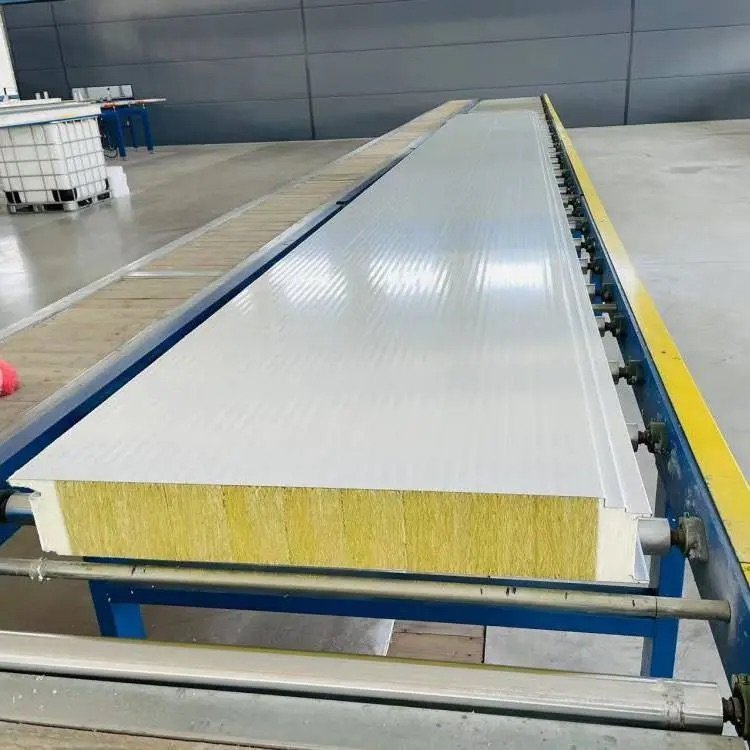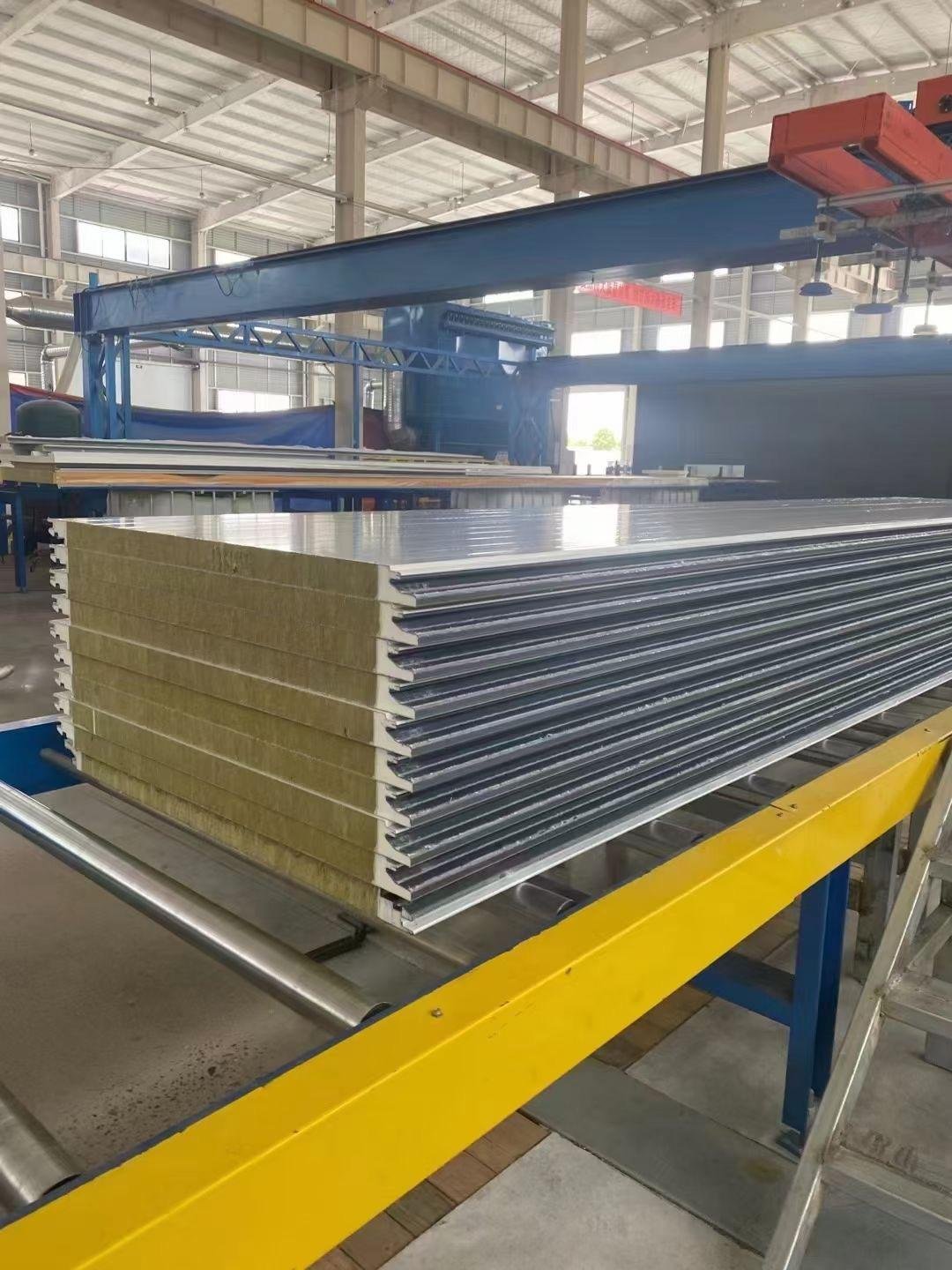
PU panel means “Polyurethane panel.” These panels are made with a foam core placed between two outer layers, usually metal or plastic. This design makes them great for insulation and building.
The world market for PU panels is growing fast. In 2023, it was worth about USD 2.5 billion. By 2033, it might grow to USD 4.5 billion, with a yearly growth rate of 7.80%.
Studies show they save energy very well. For example, adding tiny phyllite spheres to the foam lowers heat transfer, making insulation better.
These features make PU panels popular for strong and energy-saving buildings.
Key Takeaways
PU panels, short for Polyurethane panels, are light and strong. They are great for energy-saving buildings.
The global demand for PU panels is growing fast. It may reach USD 4.5 billion by 2033, showing their rising use.
These panels keep heat in or out, saving energy and keeping rooms comfy.
PU panels last long and resist water and bugs. This lowers repair needs.
They can be used in many ways, like cold storage or modular homes. They work well in different weather conditions.
Composition and Properties of PU Panels

What are PU panels made of?
Polyurethane foam core
The middle part of a PU panel is made of foam. This foam, called polyurethane, is great for keeping heat in or out. It is made by mixing two chemicals, isocyanate and polyol. These chemicals create a strong but light material. Sometimes, makers add things like silane to make the foam work better. Other panels may include materials like phyllite or recycled fibers. These extras make the foam stronger and better at keeping heat in or out.
Outer layers (e.g., metal, plastic)
PU panels have outer layers made of metal or plastic. These layers protect the foam and make the panel stronger. For example, some panels use steel covered with a special coating. Others use recycled plastic materials. These outer layers make the panels light, easy to use, and tough against damage.
Material Component | Description |
|---|---|
Core Material | Foam core that keeps heat in or out. |
Facing Materials | Recycled plastic or coated steel for strength and protection. |
Reinforcements | Added materials like phyllite or fibers for extra strength. |
Key properties of PU panels
Thermal insulation
PU panels are great at keeping buildings warm or cool. The foam inside stops heat from moving in or out. Adding tiny particles like phyllite makes the foam even better at this job.
Lightweight and durable
PU panels are strong but not heavy. This makes them easy to carry and put in place. They last a long time and resist water, bugs, and damage. This makes them a good choice for building projects.
Fire resistance (varies by grade)
Some PU panels can resist fire, depending on their type. High-quality panels meet strict fire safety rules. Some are even coated to make them safer from fire.
Property | Description |
|---|---|
Durometer (Hardness) | Shows how tough the panel is against dents. |
Resilience | Handles shocks and shakes, making it useful in many ways. |
Compression | Can hold heavy weights, making it good for building. |
PU panels mix these features to be useful and efficient for modern buildings.
Benefits of PU Panels
Insulation performance
Energy efficiency and cost savings
PU panels are great at keeping spaces warm or cool. The foam core stops heat from moving in or out. This helps lower energy use and saves money on bills.
Did you know? Polyurethane foam works well with thin layers. It provides strong insulation for energy-saving buildings. For example, Ecomate®-blown foam improves insulation and lasts longer, saving money over time.
Metric | Description |
|---|---|
Polyurethane foam keeps spaces comfortable and cuts energy costs. |
The foam stays strong over time, stopping air leaks. This keeps indoor spaces healthy and comfortable.
Durability
Resistance to moisture, pests, and wear
PU panels are tough and long-lasting. They resist water, bugs, and damage from weather. This makes them perfect for wet or rough environments.
PU panels don’t break down when exposed to water.
They are strong and handle heavy use without damage.
Roofs made with polyurethane can last over 30 years, proving their strength.
These features protect buildings and reduce the need for repairs or replacements.
Cost-effectiveness
Affordable installation and maintenance
PU panels are a budget-friendly choice for building projects. They are light, making them easy to move and install. This saves time and money on labor. Once installed, they need little maintenance, cutting costs further.
Tip: PU panels resist water and pests, so they last longer. This lowers upkeep costs and makes them a smart choice for saving money.
Benefit | Description |
|---|---|
Cuts heating and cooling costs by reducing energy loss. | |
Durability | Lasts over 30 years, lowering repair and replacement needs. |
Environmental Resistance | Stands up to water and pests, staying strong for years. |
Choosing PU panels gives you a strong, affordable material that saves energy and reduces building costs.
Versatility
Works well in different climates and uses
PU panels fit many climates and building needs. They work in both hot and cold places. The foam inside keeps buildings warm in winter and cool in summer. This makes them great for areas with big temperature changes.
Adding materials like river biomass char improves PU panels. It makes them better at keeping heat in or out and stronger. This makes them useful for walls, floors, and roofs. They can be used in homes, offices, or factories, no matter the weather.
PU panels are also easy to customize. Makers can change them to meet special needs, like better heat control or strength. Adding extra materials during production makes them tougher and better for hard jobs.
Tip: PU panels are great for places with changing temperatures. They keep spaces comfy and save energy costs.
Here’s a simple look at how they perform in different uses:
Application Type | Performance Features | Industry Use |
|---|---|---|
Specialty Panels | Better heat control, improved soundproofing | Tougher applications |
General Panels | Affordable, works for many purposes | Many industries |
PU panels are strong and flexible. Tests show they handle pressure well and stay strong with added char. These qualities make them a smart choice for modern building projects.
Applications of PU Panels

Construction uses
Walls, roofs, and ceilings
PU panels are used for walls, roofs, and ceilings. They make buildings lighter and more energy-efficient. These panels weigh much less than bricks or concrete. This reduces the building’s weight and speeds up construction. PU panels can also act as drywall. They provide good insulation and last long in homes and offices.
PU panels save time because they are light.
They are perfect for modern buildings needing strength and energy savings.
Cold storage facilities
PU panels are important for cold storage buildings. They block heat and keep temperatures low for stored items. Studies show PU panels improve energy use and cut cooling costs. This also helps reduce carbon emissions. Using PU panels keeps food fresh and saves money on energy bills.
Industrial applications
Refrigeration units
PU panels are key in refrigeration systems. They provide great insulation and are strong. These panels help control temperatures in cold storage and food factories. Here’s a quick summary of their benefits:
Application Area | Benefits |
|---|---|
Cold Storage Facilities | Excellent thermal insulation |
Food Processing Plants | Strong and fire-resistant |
Temperature-Controlled Environments | Keeps cold chain efficient |
Prefabricated buildings
Prefabricated buildings use PU panels for better performance. Research shows they work well with special foam and web layers. This makes them stronger and stiffer for tough jobs. PU panels also lower building costs while improving quality. They are a smart choice for prefab construction.
PU panels make prefab buildings stronger and last longer.
They save money without losing quality or efficiency.
Other uses
Insulated transportation
PU panels are used in cold chain shipping. They keep temperatures steady for up to 72 hours. This is great for moving vaccines and medicines that need to stay cool. PU panels ensure these items stay safe and effective during transport.
PU panels help keep medical supplies at the right temperature.
They are vital for industries needing cold storage logistics.
Modular housing
Modular homes often use PU panels for their flexibility. These panels insulate well, keeping homes comfy in any weather. Their light weight makes them easy to move and build with. PU panels can also be customized for energy-efficient and durable homes.
Tip: PU panels in modular homes are eco-friendly and cost-effective.
PU Panels vs. Other Materials
PU panels vs. PIR panels
Differences in chemical makeup
PU panels and PIR panels have different foam cores. PU panels use open-cell polyurethane foam. PIR panels use closed-cell polyisocyanurate foam. This difference changes how they work. PIR panels insulate better with a higher R-value. They also resist fire more due to their closed-cell design. PU panels are less tough outdoors compared to PIR panels.
Feature | PU Panels | PIR Panels |
|---|---|---|
Chemical Composition | Open-cell polyurethane foam | Closed-cell polyisocyanurate foam |
Thermal Insulation | Higher R-value, better insulation | |
Moderate fire resistance | Better fire resistance | |
Durability | Less durable outside | More durable for outdoor use |
Structure | Open-cell structure | Closed-cell structure |
Comparing insulation and fire safety
Both panels insulate well, but PIR panels do it better. PIR panels also handle fire better, making them safer. PU panels can be treated for fire safety. However, they are still less fireproof than PIR panels.
Feature | PU Panels | PIR Panels |
|---|---|---|
Fire Resistance | Treated for fire safety, less fireproof | Handles fire better, safer in heat |
Insulation | Works well | Slightly better due to design |
PU panels vs. EPS panels
Strength and durability
PU panels are stronger than EPS (Expanded Polystyrene) panels. They resist water, pests, and wear better. This makes them great for long-term use. EPS panels are cheaper and lighter but not as strong.
Cost and thermal performance
PU panels insulate better, saving energy costs over time. EPS panels cost less upfront but don’t insulate as well. This can lead to higher energy bills later. PU panels balance cost and performance, making them a smart choice.
PU panels vs. traditional materials
Benefits over wood and concrete
PU panels beat wood and concrete in many ways. They insulate better, cutting energy use. Their light weight makes building faster and cheaper. Unlike wood, PU panels resist pests and water. They also last longer without repairs.
Environmental impact
PU panels are more eco-friendly than traditional materials. They save energy during use, lowering their environmental impact. Adding char to PU panels makes them stronger and more durable. This makes them a good choice for green building projects.
Aspect | Polyurethane Panels | Wood and Concrete |
|---|---|---|
Environmental Impact | Lower due to energy savings | Higher due to resource use |
Energy Efficiency | Durable, reduces energy use | Varies by material |
Durability | Lasts over 40 years without repairs | Needs maintenance |
Resource Consumption | Balanced over time | Higher initial resource use |
Tip: PU panels save energy, cut costs, and support eco-friendly building.
Practical Insights on PU Panels
Installation process
Easy to install
PU panels are simple and quick to install. Their light weight makes them easy to carry and use. This reduces effort during building projects. They work well in many places, from new homes to old buildings. For example, museums use polyurethane foam to save energy. This shows how flexible and useful these panels are.
Here are the main steps to install PU panels:
Clean the surface: Make sure it’s free of dirt or dust.
Place the panels: Line them up carefully to avoid spaces.
Attach the panels: Use screws or glue to hold them in place.
Seal the edges: Add sealant to stop air or water leaks.
These steps make installation easy, even for big projects.
Tools and skills needed
You don’t need fancy tools to install PU panels. Basic items like drills, screws, and sealants are enough. For special jobs, extra tools like hot stirrers may help. Working with experts can also make tricky projects easier and faster.
Step | What Happens |
|---|---|
Melting Samples | Materials are melted using heat tools like a furnace. |
Testing Compatibility | Items like sugarcane bagasse are checked to work with polyurethane. |
Curing Process | The mixture sets for 12 hours before use. |
Cost considerations
Starting costs
PU panels cost more upfront than regular materials. This is because they need special tools and methods to make. But their high quality and long life make the price worth it. Studies show that market changes can also affect their cost.
Factor | Details |
|---|---|
Starting Costs | Special production raises the initial price. |
Market Changes | Supply chain issues can change prices. |
Saving money over time
Even though they cost more at first, PU panels save money later. They insulate well, cutting heating and cooling bills. Over time, these savings make up for the higher starting cost. Plus, their strength means fewer repairs or replacements, saving even more money.
Tip: PU panels lower energy bills and last longer, making them a smart investment.
Maintenance tips
Keeping them clean
PU panels are easy to take care of. Wipe them with a soft cloth and mild soap to keep them clean. Don’t use rough tools that might scratch the surface. Check them often to make sure there are no cracks or gaps.
Fixing or replacing panels
If a panel breaks, replacing it is simple. Take out the damaged panel and put in a new one using the same steps as before. For small cracks, use sealant to fix them quickly.
Note: Regular care helps PU panels last for many years and stay effective.
PU panels are strong, energy-saving, and very useful. They are great for modern buildings. These panels help cut energy use, which supports global eco-goals. Buildings use about 40% of the world’s energy. Using recycled materials and green designs makes PU panels even better for the planet.
PU panels help build long-lasting structures that save energy. They also reduce waste and support a cleaner future. Whether for homes, offices, or factories, PU panels are affordable and eco-friendly. They are perfect for sustainable building projects.
FAQ
How are PU panels different from other insulation materials?
PU panels are better at keeping heat in or out. They are light, strong, and last a long time. They resist water, bugs, and damage more than other materials. Their foam center and tough outer layers make them great for saving energy and building strong structures.
What sizes do PU panels come in?
PU panels are made in many sizes for different uses. Their thickness usually ranges from 20mm to 200mm. Lengths and widths depend on the maker. You can also order custom sizes to fit your project perfectly.
How do you take care of PU panels?
PU panels are easy to care for. Wipe them with a soft cloth and soap to clean. Check for cracks or gaps now and then. Use sealant to fix small problems. With regular care, they can work well for many years.
Which industries use PU panels the most?
Many industries use PU panels, like construction and cold storage. They insulate walls, roofs, and cooling systems. They are also used in modular homes and for transporting cold items, making them useful in many areas.
What affects the price of PU panels?
The price depends on thickness, quality, and custom features. PU panels cost more at first but save money over time. They lower energy bills and last long, making them a smart choice for many projects.







